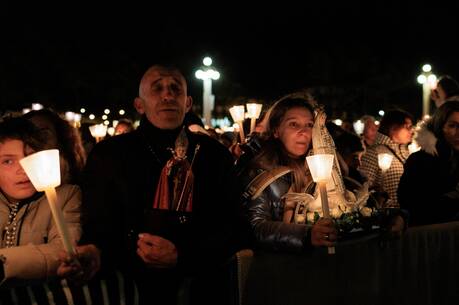Paying Attention in Syria
Even as momentum appears to be shifting in favor of opposition forces in Syria’s grinding civil war, the horrors endured by the country’s besieged civilians continue to pile up. On May 6 Caritas staff issued a plea from the divided city of Aleppo, reporting that residents have been “living the war for four years, without water, without electricity, without heating in winter” and in daily fear of aerial bombardment and indiscriminate rocket fire.
Amnesty International reports the atrocities in detail in a new report, “‘Death Everywhere’: War Crimes and Human Rights Abuses in Aleppo,” published on May 4. According to the report, 3,000 civilians in Aleppo were killed last year in barrel bomb attacks by government forces, and barrel bombs have killed 11,000 people across Syria since 2012. Opposition groups are charged with killing at least 600 civilians with indiscriminate rocket fire in 2014, and both sides stand accused of torture, arbitrary detention and abduction.
Only a negotiated settlement will bring an end to this wanton suffering and death. Recent battlefield victories by an increasingly cohesive rebel coalition, and signs of dissension and fatigue among supporters of President Bashar al-Assad, give both sides an incentive to return to the negotiating table. In early May the United Nations envoy to Syria launched a series of one-on-one consultations with opposition and government representatives, as well as victims, women, and community and religious leaders. The United States should make every effort to get these actors together in one room once again. As unpalatable as negotiating with President Assad is, worse by far is the prospect of yet another year of displacement, devastation and death for innocent people in Syria.
Camera Van
The state’s attorney for Baltimore City, Marilyn J. Mosby, wasted no time in bringing charges against the six police officers involved in the arrest and death of Freddie Gray. The most serious charge, second-degree murder, was brought against the driver of the van that took Mr. Gray to the station. In the back of that vehicle, as The Baltimore Sun aptly put it, “the 45-minute mystery of Freddie Gray’s death” occurred, referring to what and who caused Mr. Gray’s deadly spinal cord injury. The case has renewed calls to equip law enforcement officers with body cameras to bring transparency to such encounters.
On May 1 the Obama administration announced it would provide $20 million in grants to local police departments to help purchase body cameras as part of a $75 million, three-year program requested last December by the president and approved by Congress. In 2012 a study that looked at the effects of the use of body cameras by law enforcement in Rialto, Calif., found a 60 percent decrease in the use of force by police and an 88 percent reduction in complaints against officers. These findings augur well for more widespread use. Groups like the American Civil Liberties Union, however, raise important concerns about protecting the privacy of citizens being filmed that police departments must take into account.
It would be less controversial, though equally important in light of Mr. Gray’s case, to install cameras in transport vehicles as well. If there had been a camera in the van transporting Mr. Gray, we might not have a “45-minute mystery.” A brief recording could have provided essential information.
The Buck Stops Here
President Andrew Jackson’s portrait has been a familiar sight on the U.S. $20 bill since 1928. It remains unclear why his visage replaced that of Grover Cleveland, but a growing movement is making it clear that many think it is time for him to retire. A group called Women on 20s is pushing to produce a new $20 bill featuring the face of a prominent American woman, rather than Jackson. Many have wondered whether a man who forced Native Americans from their lands, offered them unfair treaties and famously battled against the central banking system remains a good choice to appear on American money.
The group hopes to change the 20 by 2020, in time for the 100th anniversary of the passage of the 19th Amendment, which granted women the right to vote. An online ballot has narrowed the field of potential candidates to four: Harriet Tubman, Eleanor Roosevelt, Rosa Parks and Wilma Mankiller, the first female chief of the Cherokee Nation. All are worthy candidates.
President Obama has called the effort to feature more women on our currency a “pretty good idea.” We agree. More than a few Catholic women have also made significant contributions to U.S. history, including St. Elizabeth Ann Seton, who established the first Catholic school in the nation, and St. Frances Xavier Cabrini, who devoted her life to assisting Italian immigrants arriving in New York. We know that as saints they are honored in heaven, but they are worthy as well of honor by the country they served. If our nation hopes to move closer to being a place of equality for all people, we should try putting our money where our mouth is.








